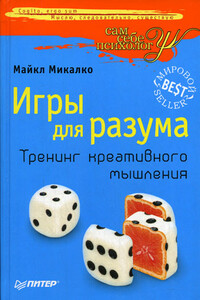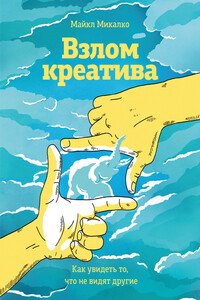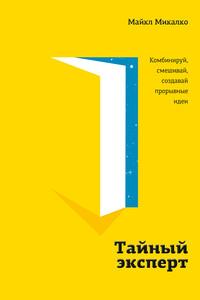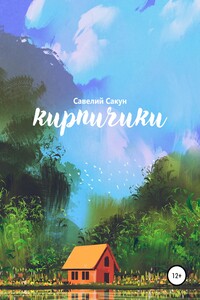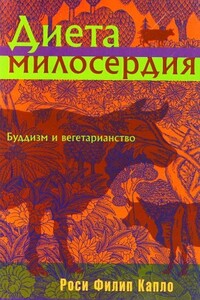Albert, Robert S. “Genius: Present-Day Status of the Concept and Its Implications for the Study of Creativity and Giftedness.” American Psychologist, 24: 743–753.
–, ed. Genius and Eminence. Woburn, MA: Butterworth-Heinemann, Pergamom Press, 1992.
Andersen, P. and D. Cadbury. Imagined Worlds: Stories of Scientific Discovery. London: Ariel Books, 1985.
Anderson, Emily. The Letters of Mozart and His Family, second ed. New York: W. W. Norton, 1986 (Моцарт В. А. Полное собрание писем. М.: Международные отношения, 2006).
Arieti, S. (1976). Creativity: The Magic Synthesis. New York: Basic Books, 1976.
Arnheim, R. Picasso’s Guernica: The Genesis of a Painting. New York: Oxford University Press, 1962.
Ashton, Dore. Picasso on Art: A Selection of Views. New York: Da Capo Press, 1988.
Barnes, Jonathan, ed. The Complete Works of Aristotle. Princeton: Princeton University Press, 1983 (Барнс Дж. Аристотель: Краткое введение. М.: АСТ, Астрель, 2006; Аристотель. Сочинения: В 4 т. М.: Мысль, 1976–1983).
Barron, F. Creative Person and the Creative Process. New York: Holt, Rinehart and Winston, 1969.
–, and D. M. Harrington. “Creativity, Intelligence, and Personality.” Annual Review of Psychology 32 (1981): 439–476.
Bell, Eric. Men of Mathematics. New York: Simon & Schuster, 1986 (Белл Э. Творцы математики. М.: Просвещение, 1979).
Bellak, L. “Creativity: Some Random Notes to a Systematic Consideration.” Journal of Protective Thinking 22 (1984): 363–380.
Bennis, Warren, and Patricia Biederman. Organizing Genius: The Secrets of Creative Collaboration. Reading, MA: Addison-Wesley, 1996.
Bernadac, Marie-Laure, and P. Dubouchet. Picasso: Master of the New Idea. Trans, by Carey Lovelace. New York: Harry N. Abrams, 1993.
Boden, M. The Creative Mind: Myths and Mechanisms. New York: Basic Books, 1991.
Bohni, D., and F. P. Peat. Science, Order, and Creativity. New York: Bantam Books, 1987.
Bohr, Niels. Atomic Theory and the Description of Nature. Woodbridge, CT: Ox Bow Press, 1987 (Бор Н. Атомная физика и человеческое познание. М.: Изд-во иностр. лит., 1961).
Bouchard, Thomas J., and M. Hare. “Size, Performance, and Potential in Brainstorming Groups.” Journal of Applied Psychology 54 (1970): 51–55.
Bramly, S. Leonardo: Discovering the Life of Leonardo da Vinci. New York: HarperCollins, 1991.
Brian, Denis. Genius Talk: Conversations with Nobel Scientists and Other Luminaries. New York: Plenum Press, 1995.
Briggs, J. Fire in the Crucible. New York: St. Martin’s Press, 1990.
Briskman, L. “Creative Product and Creative Process in Science and Art.” Inquiry 23 (1991): 83–106.
Burke, James. The Pinball Effect. New York: Little, Brown and Company, 1997 (Берк Дж. Пинбол-эффект. М.: Изд-во студии Артемия Лебедева, 2014).
Callow, Philip. From Noon to Starry Night: A Life of Walt Whitman. New York: Ivan R. Dee, 1992.
Campbell, D. T. “Blind Variation and Selective Retention in Creative Thought as in Other Thought Processes” Psychological Review 67 (1960): 380–400.
–. “Unjustified Variation and Selective Retention in Scientific Discovery.” In Studies in the Philosophy of Biology, edited by F. J. Ayala and T. Dobzhansky, pp. 139–161. London: Macmillan, 1974.
Cannon, W. B. “The Role of Chance in Discovery.” Scientific Monthly 50 (1940): 204–209.
Chastel, A. The Genius of Leonardo da Vinci. New York: Orion Press, 1961.
Chomsky, Noam. Language and Mind. New York: Harcourt Brace College Pubs., 1972 (Хомский Н. Язык и мышление. М.: Изд-во МГУ, 1972).
Clark, D. Great Inventors and Discoveries. London: Marshall Cavendish Books, 1978.
Clark, R. W. Einstein: The Life and Times. New York: World, 1971.
Conot, Robert. Thomas A. Edison: A Streak of Luck. New York: Da Capo Press, 1986.
Cox, Catharine. Early Mental Traits of Three Hundred Geniuses. Stanford, CA: Stanford University Press, 1926.
Crandall, R. “The Relationship Between Quantity and Quality of Publications.” Personality and Social Psychology Bulletin 4 (1978): 379–380.
Cropper, A. J. The Quantum Physicists. New York: Oxford University Press, 1970.
